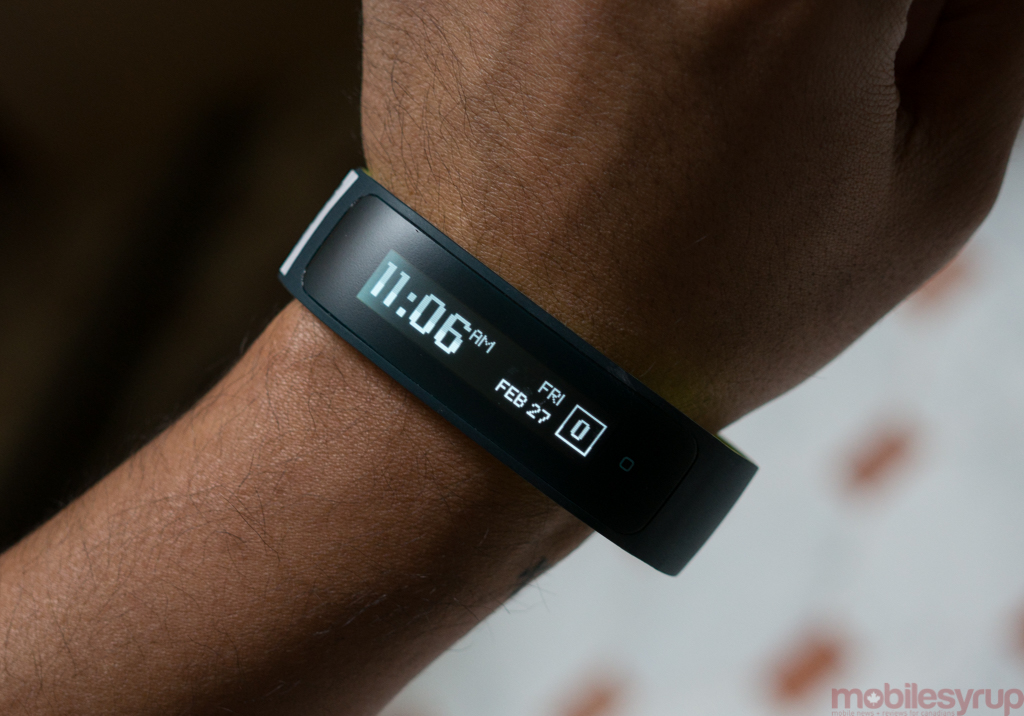
HTC held off releasing a wearable product for what seemed like ages. But the lure was too great, as giants like Samsung and, soon, Apple, began planning their post-smartphone futures.
Wearables are a different beast altogether, explains Jeff Gattis, HTC’s Executive Director of Global Marketing for Connected Products. While the small team behind the strange RE Camera began exploring wearables some years ago, Gattis admits that until recently, he didn’t feel like HTC could make something that lived up to its extremely rigorous internal quality standards.
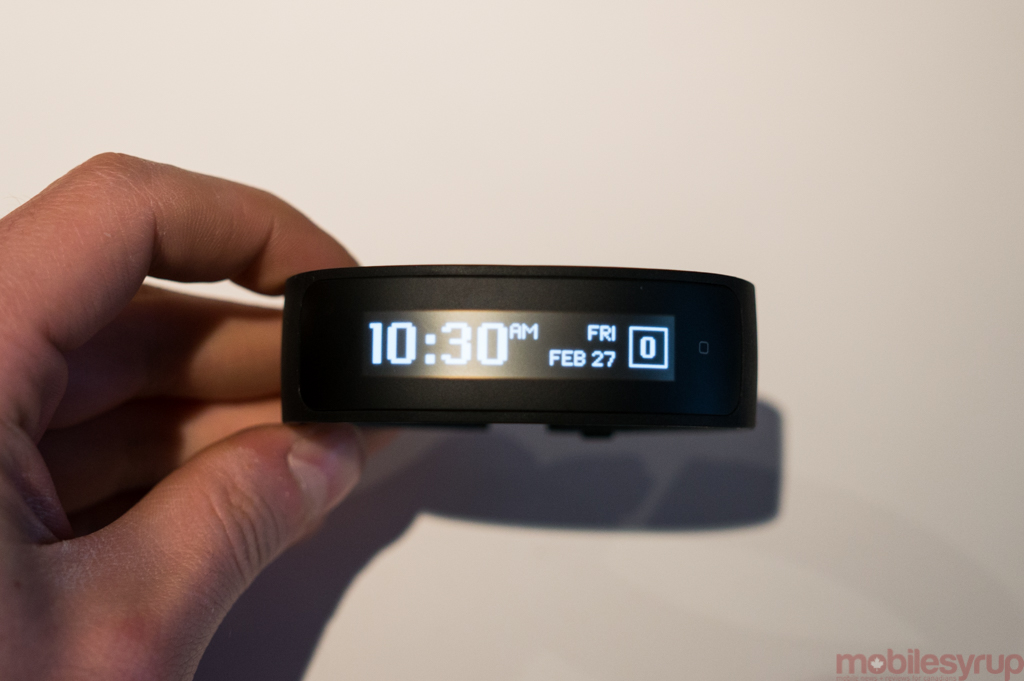
According to HTC, the nascent smartwatch space has few winners so far, and the prospect of entering the already-saturated market with another me-too Android Wear band held little value.
Instead, the company partnered with Under Armour, an increasingly important company in the connected health space after the recent acquisitions of MyFitnessPal and Endomondo, to develop a comfortable, water-resistant fitness band that doesn’t require — but benefits from — a smartphone.
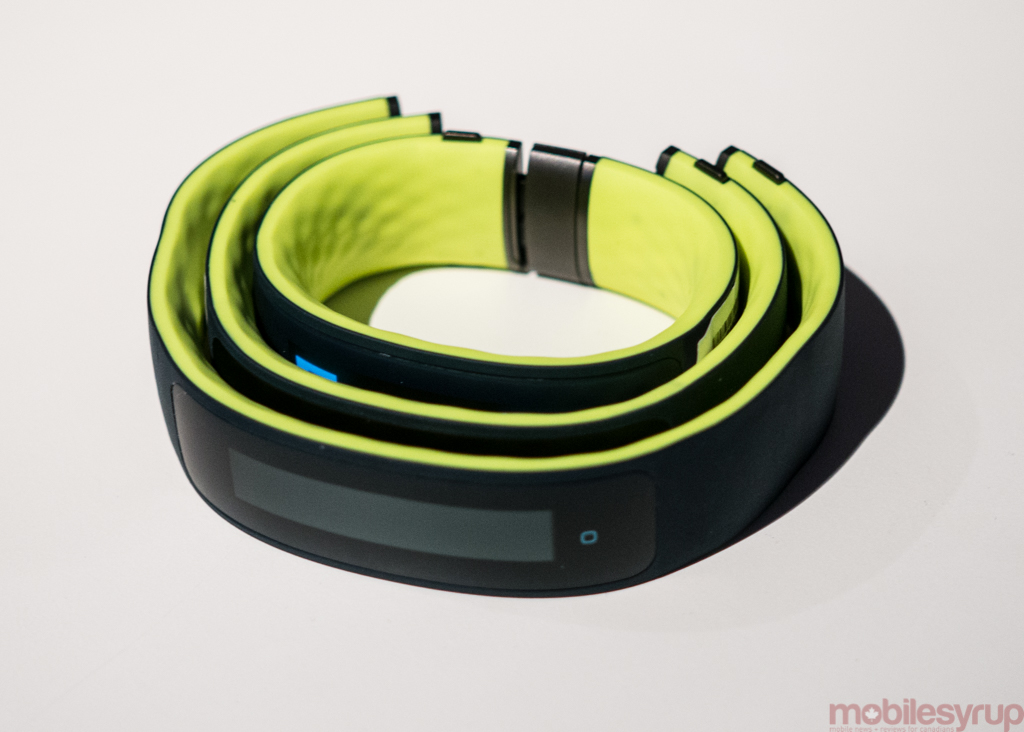
Available later this year for $199 USD (Canadian distribution has not been solidified just yet), the HTC Grip, which falls under the company’s RE branding, functions as a GPS-based fitness tracker that counts activity from runs and bike rides, both when moving and stationary, uploading the results to UA Record, a network of millions of fitness fans.
The small horizontal touch screen uses an old but reliable technology, Passive Matrix OLED (PMOLED) which, while less efficient and more battery-intensive than modern Active Matrix OLED displays, costs less to manufacture. The screen appears more like an e-paper display than one from a modern wearable, but HTC says most users are not going to be consuming enough information on the 180×32 pixel display to make a difference.
Due to the fact that it has a GPS and Bluetooth support, athletes can connect third-party accessories like chest-strapped heart rate monitors — Grip doesn’t come with its own due to what HTC calls an “industry-wide shortage of reliable components” — and not have to worry about bringing along a phone on the run.
I tried the Grip for a few minutes before HTC took it back, claiming it was a very early production sample, but the medium-sized bracelet clipped around my wrist with a satisfying “clink,” and after a time I forgot it was there. That’s a good thing, because this thing is meant to be worn all day, every day, by millions of people. HTC will sell three sizes of the Grip, which should hit most wrist sizes comfortably.
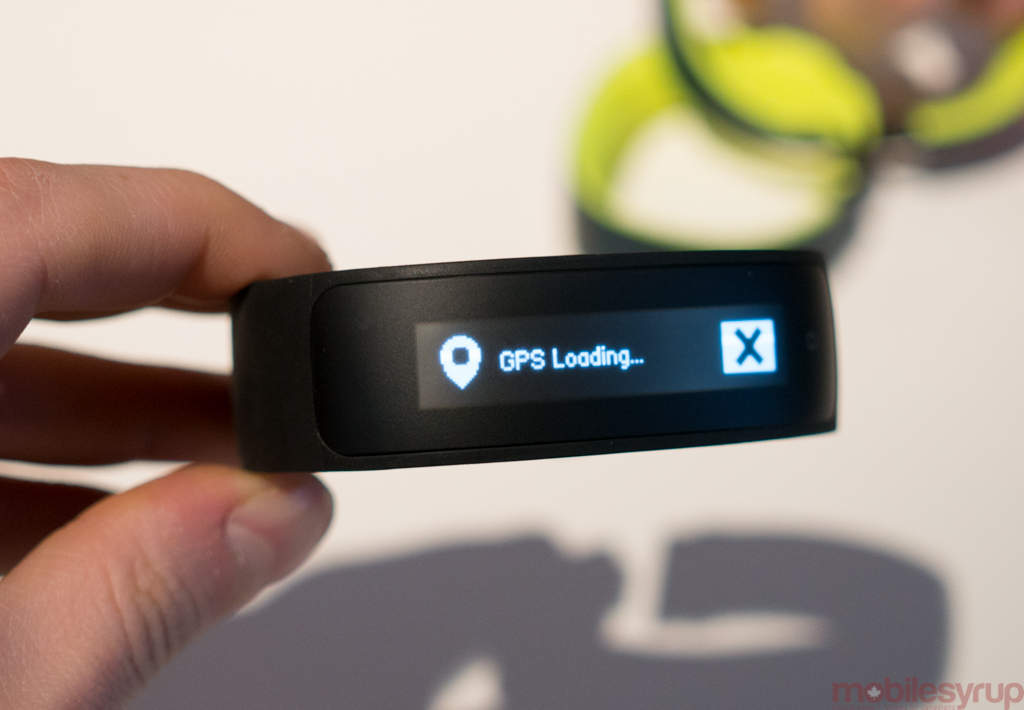
What’s interesting about the Grip is its focus; unlike the broad market base for smartwatches and regular fitness bands from Fitbit and Jawbone, HTC Grip goes up against the Garmins, TomToms, Epsons and Basis(es) of the world, attempting to encourage athletes, not fitness “fans,” to use their data more wisely.
In many ways, this is a smart move, since there’s swaths of data to show that few people continue to wear fitness bands after six months for a lack of what is known as data relevancy (what is the purpose of knowing how many steps a day one takes if it does nothing to influence behaviour?). Athletes, the ones that attend the gym or run outside daily, training for marathons, and other tournaments, benefit most from the numerous sensors inside wearables like the Grip because they likely already take action on whatever data they can find.
Grip also automatically tracks sleep, a feature that’s becoming increasingly important in the quickly-commoditizing fitness wearable space.
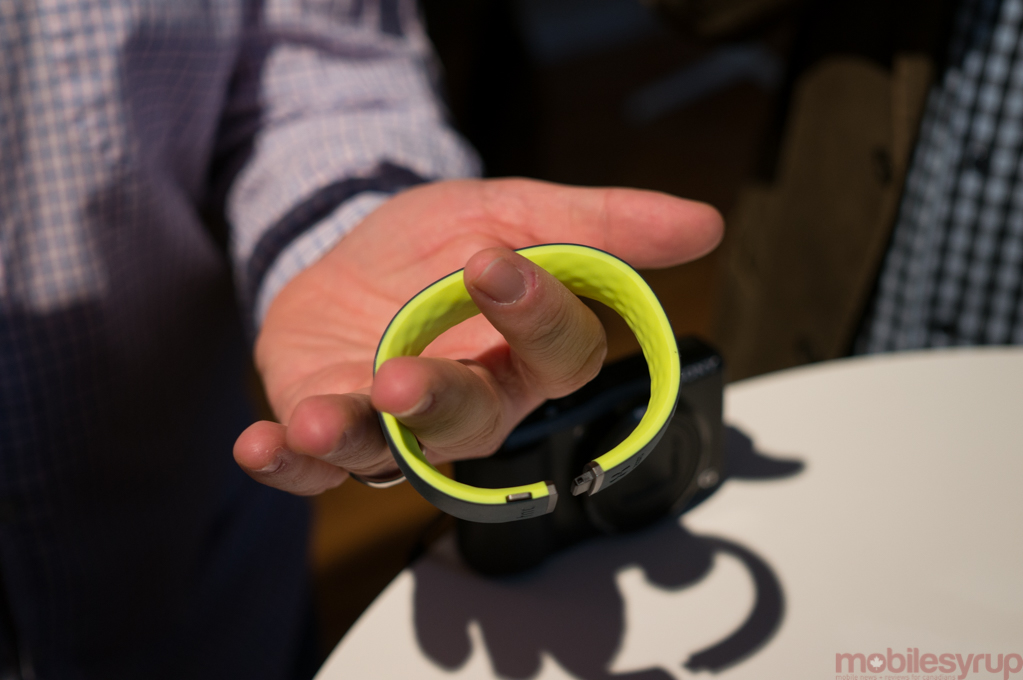
HTC claims Grip lasts over two days per charge with regular use, and five hours with GPS activated: “More than enough time to run a marathon,” Gattis tells us. The 100mAh battery can be easily recharged using a proprietary magnetic adapter, which ensures the Grip stays water and shock resistant (IP57 and MIL-STD-810G respectively).
And because HTC is a smartphone company, it behooved them to add notification support, though unlike many smartwatches, the Grip supports both iOS and Android in this regard. The notifications are limited to incoming calls and messages, but they’re better than nothing.
Indeed, HTC admits that its first wearable is largely an experiment to gauge demand for such a product. It hasn’t ruled out developing a smartwatch, and Drew Bamford, VP of HTC’s Creative Labs, thinks there’s a lot of things current wearables do right. But Android Wear, as much potential as it has, is not making companies any money, as judged by the paucity of sales in 2014, and focused, athlete-oriented wearables like the Grip tend to sell in volume, and have fewer complaints.
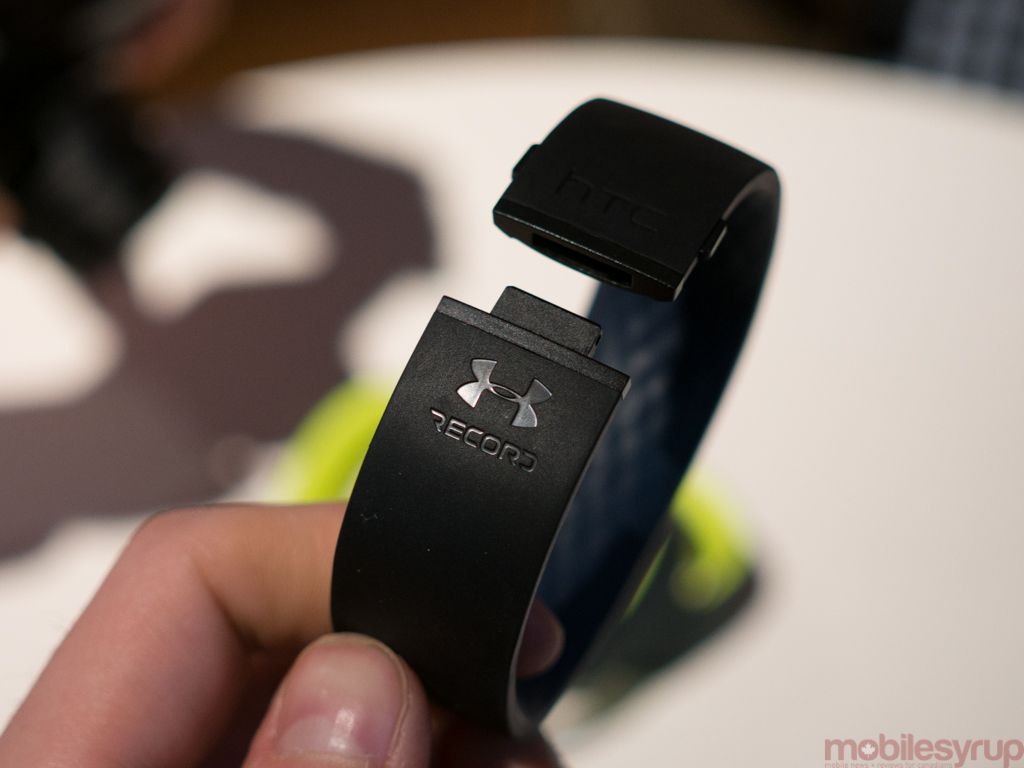
While it’s unlikely Canada will see the HTC Grip anytime soon, users will be able to import one and use it with the Under Armour Record network, which is available for iOS and Android.
HTC plans to launch the Grip starting this spring in the Deep Teal and Lime colour seen above.
MobileSyrup may earn a commission from purchases made via our links, which helps fund the journalism we provide free on our website. These links do not influence our editorial content. Support us here.


